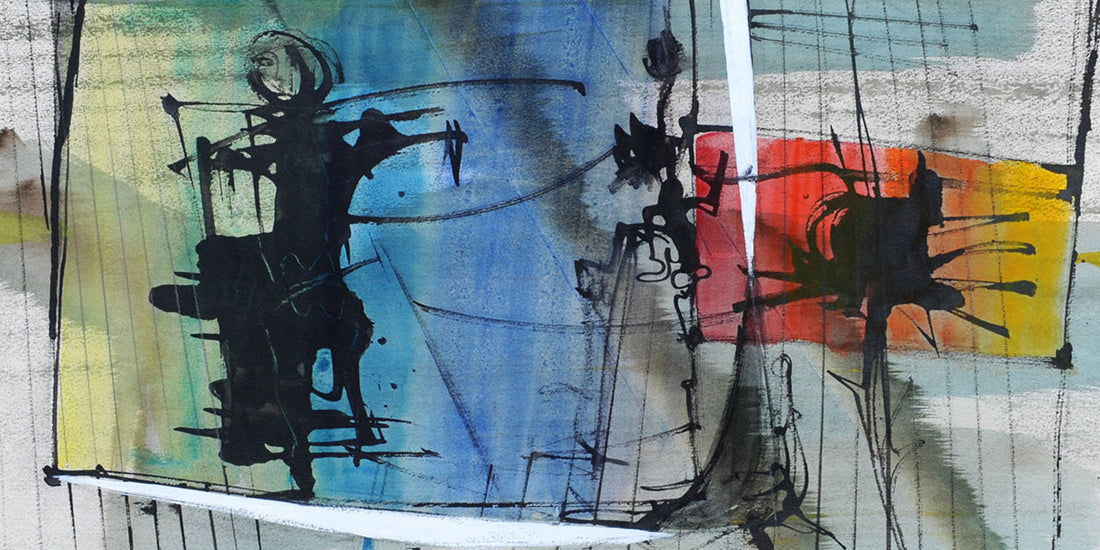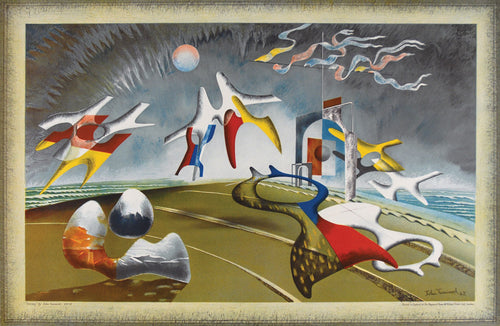
Completed in 1962, John Tunnard’s mysterious Screen reveals a host of new influences that would inform the artist’s final works throughout the 1960s.
Across the 1930s and ‘40s Tunnard established his reputation as a Neo-Romantic painter and printmaker, producing landscapes inhabited by biomorphic forms and surreal sculptural elements that drew inspiration from the work of contemporaries Julian Trevelyan and Henry Moore.
But with the technological advances made in the following decades, new shapes and designs began to enter his visual vocabulary: space-age machinery, intricately composed semi-mechanical insects, and extraterrestrial environments.
 'Screen' detail; Tunnard combines the mechanical and the organic to great effect in this watercolour painting
'Screen' detail; Tunnard combines the mechanical and the organic to great effect in this watercolour painting
Later exhibited at the Royal Academy Exhibition in 1967, Screen presents these fresh influences in Tunnard’s typically elusive style. Two ‘screens’ – televisions, computers, projectors – display colour in a stark room, parallel lines hinting at a depth of perspective. Within each screen, black forms remain abstract and unidentifiable: figures with faces, perhaps, or bizarre bug-like creatures?
Though demand for Tunnard’s work declined after his death in 1971, during his lifetime his paintings were widely admired. The great collector Peggy Guggenheim recalled how Tunnard once showed us his gouaches, which were as musical as Kandinsky’s, as delicate as Klee’s, and as gay as Miró’s.
Just 6 months ago a Tunnard oil painting sold for over £70,000 at auction. We think this gouache represents remarkable value.


